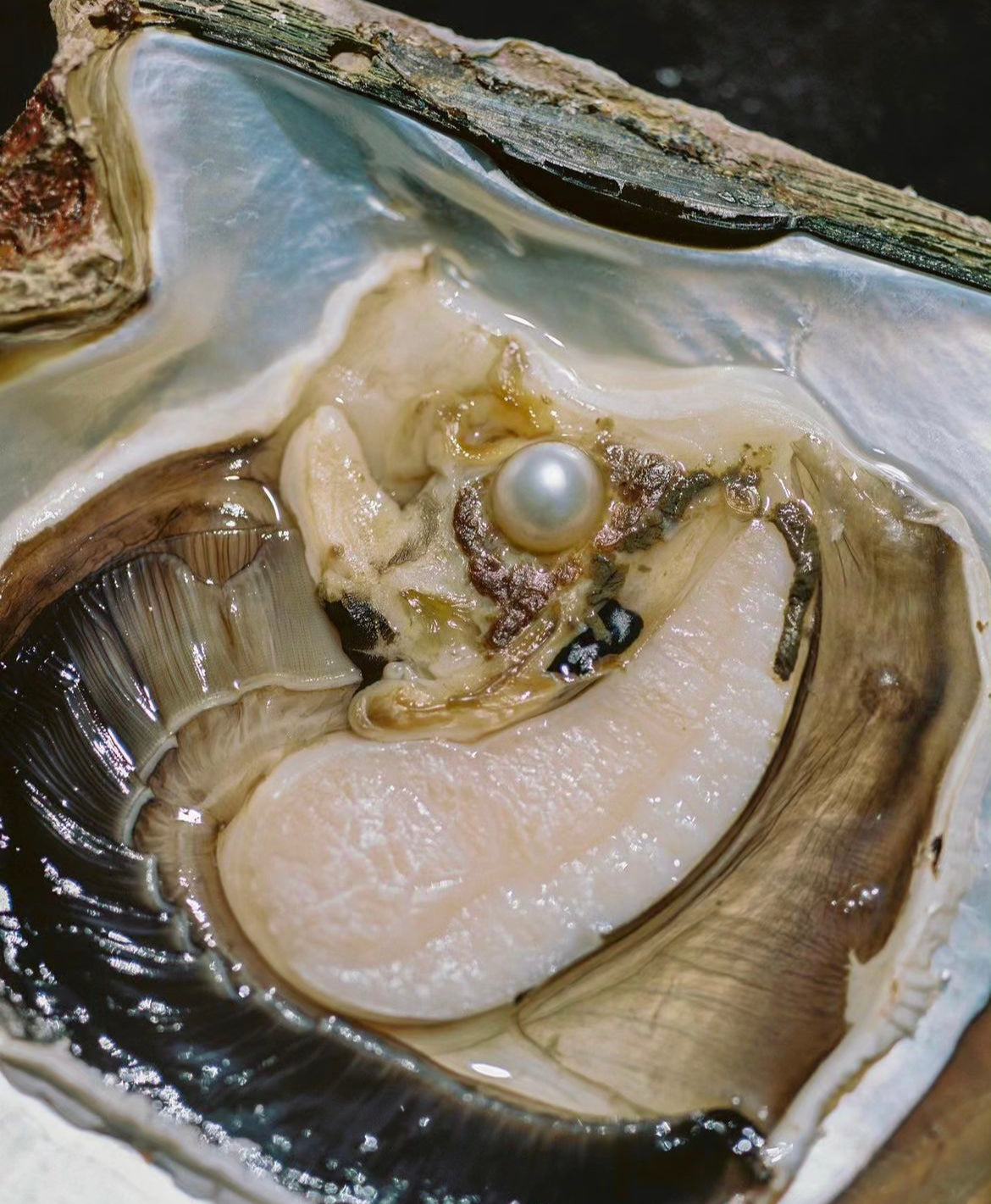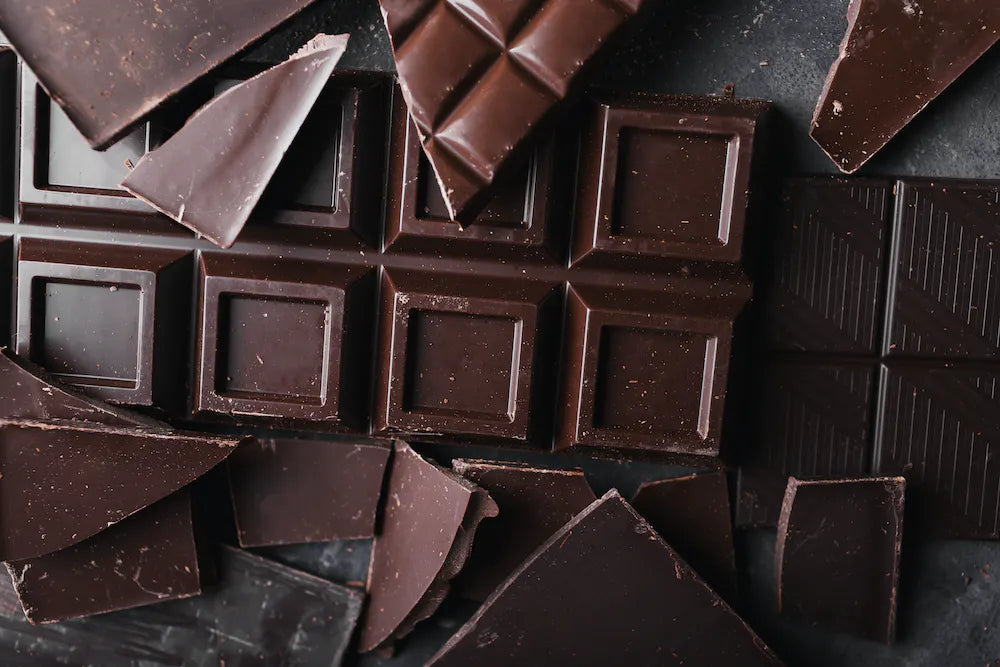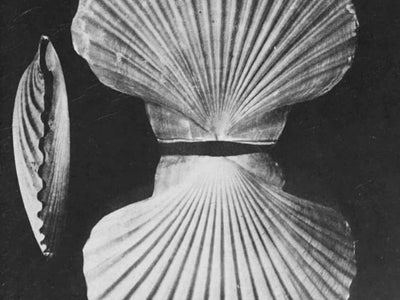
With curiosity as your compass, we invite you to indulge in Për Në’s guide to aphrodisiac foods.

Eating is a primal need, an intimate act intertwined with pleasure. In the intoxicating realm of aphrodisiacs, food goes beyond nourishment as an avenue to awaken the senses. Touch, smell, sight and taste are stimulated. The allure of aphrodisiacs has drawn people in for centuries, with promises of deepened desire and ultimate pleasure. The name is derived from Aphrodite, the Greek goddess of love and beauty, whose sensuality was so potent it resulted in destruction. Through aphrodisiac, desire is given a form- a flavor, a fragrance, a texture. With curiosity as your compass, we invite you to indulge in Për Në’s guide to aphrodisiac foods.
Strawberries
The epitome of summertime and the perfect paradox of tart and sweet, Strawberries are an everyday decadence that is unknowingly erotic. They’re loaded with antioxidants and phytochemicals, which reduce inflammation. Strawberries are overflowing with vitamin C, which has been shown to enhance libido and increase blood flow. The delicate fruit fits perfectly between the fingers for easy feeding, a light and sensuous offering.
Honey
A delicacy that’s been associated with love and sex since the beginning of time. Hippocrates prescribed honey for sexual vigor, and in some cultural traditions, it was consumed every day after marriage to bring a long and lustrous union. Indulging in honey can regulate hormone levels and increase nitric acid, a chemical released into the blood during arousal. The sticky, sweet nectar, begging to be drizzled, is a form of sugar easily converted to energy.
Maca Root
The allure of maca root has been prevalent in Peruvian cultures for thousands of years, standing as a timeless testament to the power of natural aphrodisiacs. It holds unparalleled potency as a superfood and is known to awaken desire. Maca Root has been cherished for its mystical prowess, a key that unlocks doors to improved fertility in women and increased sperm count in men.
Oysters
Oysters symbolize virility and passion. Best enjoyed raw and on the half shell, not all are brave enough to experience the pleasure of an oyster. Oysters are reminiscent of the most sensual body parts, making them aphrodisiacal by nature. Loaded with zinc, they increase testosterone production in men and women, a key factor in arousal. Pearlescent and pretty, an oyster slips delicately off its shell and into the lucky mouth of its consumer, releasing an arsenal of pleasure-inducing compounds.
Chocolate
Food of the gods, chocolate is the ultimate in aphrodisiacs. The rich, luxurious sweet contains two compounds that light up pleasure centers in the brain. Phenethylamine is a stimulant related to amphetamine and is released when falling in love. Tryptophan produces serotonin, a chemical associated with elevated moods and arousal. Chocolate is also a shapeshifter; devour it dark and bold, warm and melted, or double down and have it strawberry-dipped.


Blue Lotus
The blue lotus is an emblem of beauty, a delicate and rare blossom native to Egypt and Asia. Edible flowers make powerful aphrodisiacs; after all, flowers are the sex organs of plants. Blue lotus is said to connect humans to the divine, offering a state of elevated spiritual consciousness. Apomorphine and nuciferine are the dominant compounds responsible for blue lotus’ medicinal effects, inducing feelings of euphoria and calm.
Blue Butterfly Pea
Said to be ruled by Venus and connected to the element of water, blue butterfly pea carries attributes of emotional serenity and protection. With soft petals of luscious blue resembling feminine anatomy, one look at a blue butterfly blossom will explain its aphrodisiac effect. Historically, it was prescribed to women for increased sexual desire. Rich in collagen, blue butterfly is commonly found in skincare products, further affirming the link between beauty and sex.
Saffron
Exotic and flavourful, it's rumored that Cleopatra bathed in milk and Saffron before meeting with her suitors. Vivid red in color, like the flush of skin, saffron has been a staple in Indian and Persian cultures since ancient times. Steeped in the world of spiritual healing, it’s said to balance the root chakra, which rules trust and security. Modern science recognizes saffron as a natural aphrodisiac. It contains the compound crocin, which elevates stamina in men and boosts arousal in women. Saffron tantalizes the palate and stimulates the appetite, in more ways than one.
Rosemary
The intoxicating, heady scent of rosemary is unmistakable. In medieval times, women pulverized the fragrant herb and used it to scent their décolleté to seduce a partner. Rosemary is full of libido-lifting vitamins that increase circulation. But it's also connected to memory, and what's better than a lover that can recollect which buttons to push?
Chili
The very symptoms of spice mirror those of arousal: a racing heart, a flushed face and blood rushing through the veins. Chili has a long history of aphrodisiacal association, mainly for its capsaicin content, a compound that gives peppers their kick. Chili presents in many variations and forms, all stimulating nerve endings on the tongue and releasing sex-drive-boosting chemicals.
With all this information, aphrodisiacs are still an enigma. The studies are as divided as our desires, lacking the foundation of undeniable proof. But we know this to be true: food holds energy. It goes beyond sustenance, contributing to healthy blood circulation, balanced hormones and enhanced vitality. If the hunger for pleasure we experience after indulging in an aphrodisiac is just a delicious placebo, does it matter? Let’s not forget, the mind is a provocative playground, and the brain is a sexual organ, too.


